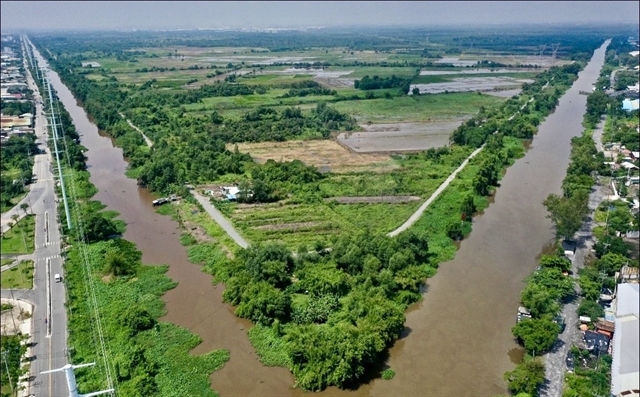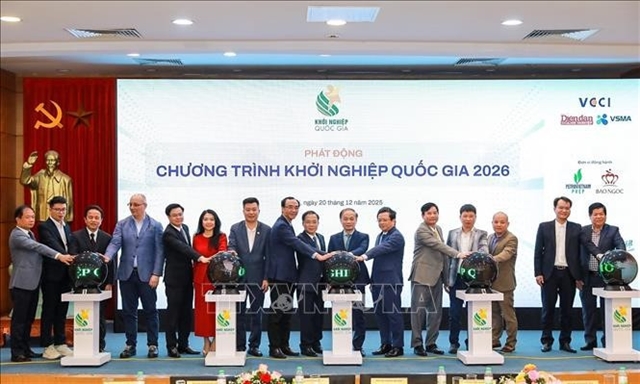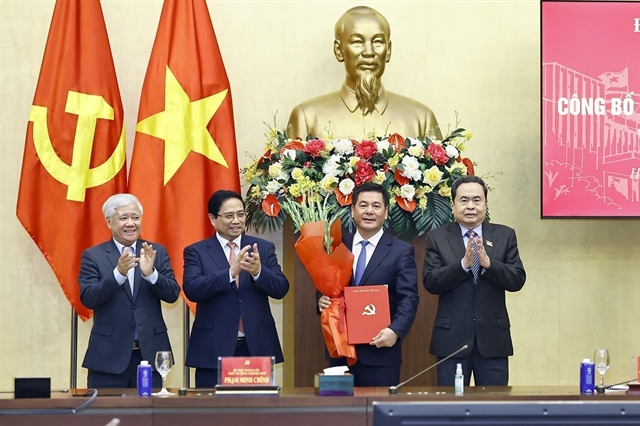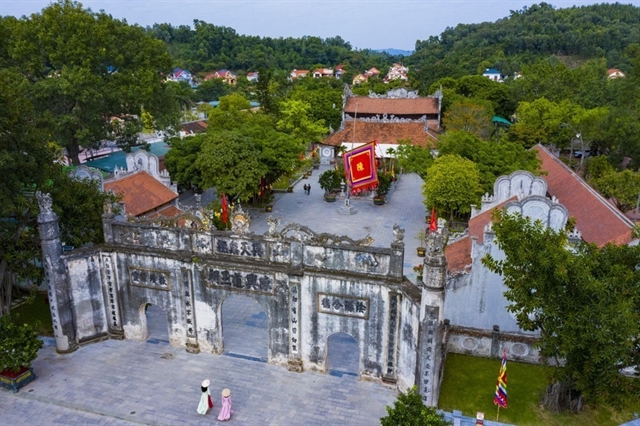 Society
Society

Deputy Prime Minister Trịnh Đình Dũng has urged agencies to work together closely to ensure that construction of Long Thành International Airport in the southern province of Đồng Nai will begin next year.
 |
| A rendering of the proposed Long Thành International Airport in the southern province of Đồng Nai. — Photo courtesy of Airports Corporation of Việt Nam (ACV) |
HCM CITY — Deputy Prime Minister Trịnh Đình Dũng has urged agencies to work together closely to ensure that construction of Long Thành International Airport in the southern province of Đồng Nai will begin next year.
Speaking at a meeting in Hà Nội on Tuesday, the deputy PM said it was urgent to start construction as soon as possible as Tân Sơn Nhất International Airport in HCM City has become seriously overloaded.
He said the new airport in Đồng Nai near HCM City should become an aviation hub for Southeast Asia.
Dũng has urged the Transport Ministry and consulting companies to ensure safety, convenience, quality, efficiency, national defence and security, and environmental protection at the airport.
To minimise the use of state budget capital, the Deputy PM has called on the private sector to invest in the project.
“If we choose potential investors with deep pockets, costs will surely be lower compared to the use of public funds or loans,” he said.
Dũng has also asked agencies to complete the feasibility report and verify the independent consultant through the state appraisal council. The report should be submitted to the Government and the PM, and then to the National Assembly by the end of the year.
The Airports Corporation of Việt Nam (ACV), which operates 21 airports in the country, said it could bring in the US$1-1.5 billion needed for the first phase of the airport’s construction.
It is currently working with the Ministry of Transport and Đồng Nai authorities to acquire 1,800 hectares of land for the first phase.
The ministry said that JFV, the consultancy consortium for the airport, is now completing the preliminary design, which will be submitted in April.
JFV is expected to complete an environmental impact report by next month. JFV, which comprises three Japanese, one French and two Vietnamese companies, also has to submit a feasibility report by June.
Land for airport
Đồng Nai Province recently decided to hand over 1,165 hectares of land for the first construction phase of the airport early this year.
To develop the airport project, nearly 5,400ha of land in Long Thành District will be cleared, of which 5,000ha will be used to build the airport, according to Đồng Nai People’s Committee.
Besides a large area occupied by the Đồng Nai Rubber Corporation, 17,000 people will have to be cleared and relocated.
Đinh Quốc Thái, chairman of the province’s People’s Committee, said the airport project was the largest ever in the province, affecting 5,000 households, with total compensation of nearly VNĐ18 trillion.
The total cost for clearance, compensation and resettlement will be VNĐ22.85 trillion ($978 million), sourced from the State budget.
At least VNĐ4.1 trillion of the amount will be invested in infrastructure in resettlement areas, and VNĐ479 billion will be spent on infrastructure outside the airport.
Some VNĐ17.8 trillion has been earmarked for resettlement purposes, VNĐ306 billion for vocational training and job generation for residents, and VNĐ27 billion for a feasibility report.
Once fully operational, Long Thành Airport will reduce the load on neighbouring Tân Sơn Nhất International Airport in HCM City. It will be able to handle 100 million passengers and five million tonnes of freight each year.
Covering a total area of more than 5,580 hectares, the airport will be located in six communes in Long Thành District in Đồng Nai Province.
The airport’s total investment is VNĐ336.63 trillion, with construction divided into three phases.
In the first phase, a runway and one passenger terminal along with other supporting works will be built to serve 25 million passengers and 1.2 million tonnes of cargo each year.
The first phase is expected to be completed by 2025.
In the second phase, one more runway and another passenger terminal will be built to serve 50 million passengers and 1.5 million tonnes of cargo a year.
After the third phase, the airport will be able to serve 100 million passengers and 5 million tonnes of cargo a year.
The investment will come from various sources, including state funds and capital raised from private investors, among others. — VNS




